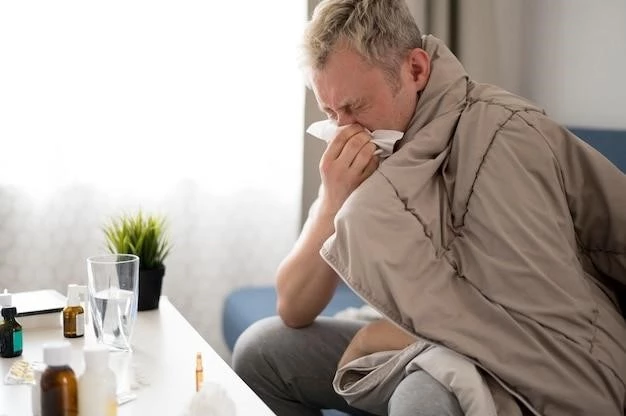Symptoms of Amebiasis
Recognizing common symptoms like stomach pain, bloody diarrhea, and weight loss can help in early diagnosis. Seek medical attention promptly.
Identifying Common Symptoms
Common symptoms of amebiasis include stomach pain, cramping, bloody diarrhea, fatigue, and unintended weight loss. Pay attention to these signs, especially if you have traveled to regions where the infection is prevalent or have consumed contaminated food or water. Seek medical advice if you experience these symptoms to receive appropriate treatment promptly.
Recognizing Severe Symptoms
Severe symptoms of amebiasis may include high fever, severe abdominal pain, vomiting, dehydration, and rectal bleeding. If you experience these severe symptoms, seek immediate medical attention as they could indicate complications requiring urgent treatment. Do not delay in getting the necessary medical help to prevent the condition from worsening.

Causes of Amebiasis
Amebiasis is commonly caused by ingesting food or water contaminated with the parasite Entamoeba histolytica. Take precautions to avoid contamination.
Transmission through Contaminated Water or Food
Amebiasis spreads through consuming contaminated food or water with the parasite. Properly wash and cook food, drink safe water, and maintain good hygiene to prevent infection. Be cautious when traveling to areas with poor sanitation.
Poor Sanitation Practices
Improper sanitation practices contribute to the spread of amebiasis. Ensure good hygiene, dispose of fecal matter safely, and avoid open defecation to minimize the risk of infection. Educate others on the importance of sanitation to protect communities from this parasitic infection.
Treatment for Amebiasis
Timely treatment with medications and additional therapies can effectively manage and cure amebiasis. Consult a healthcare professional for proper guidance.
Medications
Medications like antiprotozoal drugs are commonly used to treat amebiasis. Follow the prescribed treatment regimen diligently and complete the full course to ensure the infection is eradicated. Inform your healthcare provider of any side effects experienced during treatment.
Additional Treatments
In addition to medications, staying hydrated, getting enough rest, and following a nutritious diet can aid in the recovery from amebiasis. Avoid alcohol and spicy foods during treatment. Consult your healthcare provider for guidance on managing symptoms and supporting your overall well-being.
Prevention of Amebiasis
Adopting proper hygiene practices and ensuring food safety measures are crucial in preventing amebiasis; Protect yourself and others by following these guidelines.
Hygiene Practices
Practicing good hygiene, such as washing hands with soap and clean water before eating and after using the toilet, can prevent the spread of amebiasis. Avoid close contact with infected individuals and maintain cleanliness in surroundings to reduce the risk of contamination. Educate children about the importance of hygiene to instill healthy habits early on.
Food Safety Measures
Ensure food safety by thoroughly washing fruits and vegetables, cooking meat to proper temperatures, and avoiding consuming raw or undercooked foods. Store perishable items correctly and refrain from consuming unpasteurized dairy products to lower the risk of contracting amebiasis. Adhere to food safety guidelines to safeguard against foodborne infections.
Amebiasis in Children
Understanding symptoms in children and appropriate treatment approaches for them are vital in managing amebiasis in pediatric patients.
Symptoms in Children
In children, symptoms of amebiasis may manifest as stomach pain, diarrhea, nausea, and fatigue. Monitor closely for these signs and seek prompt medical attention to ensure accurate diagnosis and effective treatment. Communicate any concerns or changes in your child’s health to their healthcare provider for proper management of the condition.
Treatment Approaches for Children
Treating amebiasis in children involves medication prescribed by a healthcare provider. Ensure your child completes the full course of treatment, monitors their progress, and follows any dietary recommendations provided. Support their recovery by maintaining good hygiene practices and seeking medical guidance for any concerns. Collaboration with healthcare professionals is key to managing amebiasis effectively in children.
Amebiasis Outbreaks
Understanding outbreak triggers and taking actions to control and prevent the spread are essential in managing amebiasis outbreaks.
Understanding Outbreak Triggers
Identifying outbreak triggers such as poor sanitation, contaminated water sources, and crowded living conditions is crucial. Timely interventions, improved hygiene practices, and public health measures can help prevent and contain amebiasis outbreaks. Stay informed, follow guidelines, and collaborate with health authorities to minimize the risk of outbreaks in your community.
Controlling Outbreaks
Controlling amebiasis outbreaks requires prompt response, public health interventions, and community awareness. Implement measures such as sanitization, safe water supply, and health education to limit the spread. Work together with health authorities, adhere to guidelines, and promote preventive actions to effectively control and contain outbreaks of amebiasis.
Amebiasis Complications
Recognizing intestinal and extra-intestinal complications of amebiasis is crucial for timely management and prevention of severe outcomes.
Intestinal Complications
Intestinal complications of amebiasis, such as amoebic colitis, can lead to symptoms like severe abdominal pain, dysentery, and bowel perforation. Prompt diagnosis and treatment are essential to prevent complications like peritonitis. If you experience worsening abdominal symptoms or bloody diarrhea, seek immediate medical attention for evaluation and appropriate management.
Extra-intestinal Complications
Extra-intestinal complications of amebiasis, such as liver abscesses, can present with symptoms like fever, abdominal pain, and jaundice. These complications may require specific treatments like drainage procedures. If you develop persistent fever or right upper abdominal pain, seek urgent medical attention for proper evaluation and management to prevent potential complications.
Diagnosis of Amebiasis
Proper diagnosis involves stool examination and imaging tests to identify the presence of the parasite and any associated complications.
Stool Examination
Stool examination is a key diagnostic test for amebiasis. Providing a stool sample for analysis helps detect the presence of Entamoeba histolytica parasites or their components. Follow instructions for collecting and submitting the sample accurately to ensure an accurate diagnosis. If you suspect amebiasis due to symptoms or travel history, consult a healthcare provider for proper testing and evaluation.
Imaging Tests
Imaging tests such as ultrasound or CT scans may be used to detect complications of amebiasis, like liver abscesses. These tests help visualize abnormalities in the organs affected by the infection. Follow the recommendations of your healthcare provider regarding the need for imaging studies to assess any potential complications and guide the treatment plan effectively.
